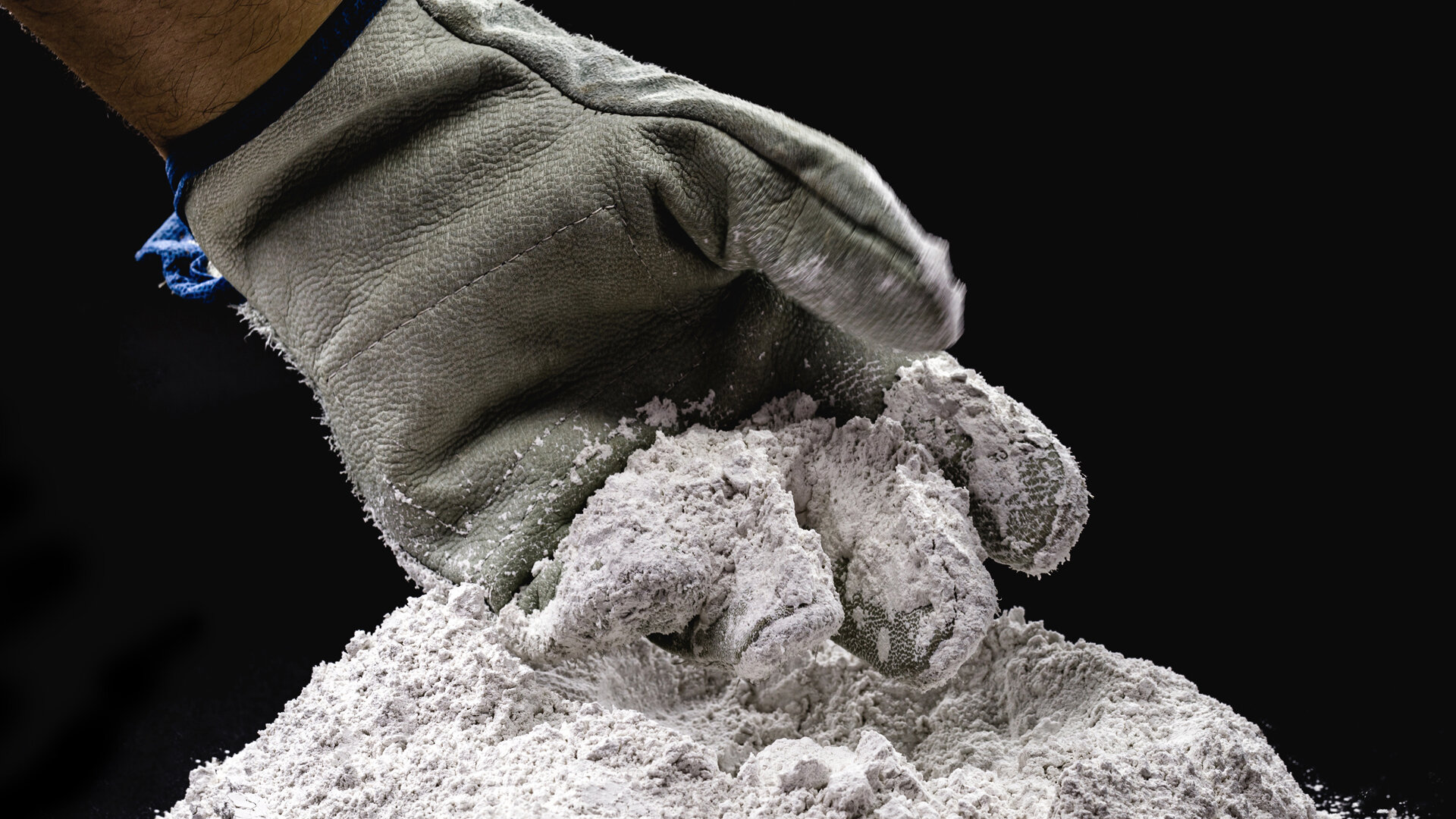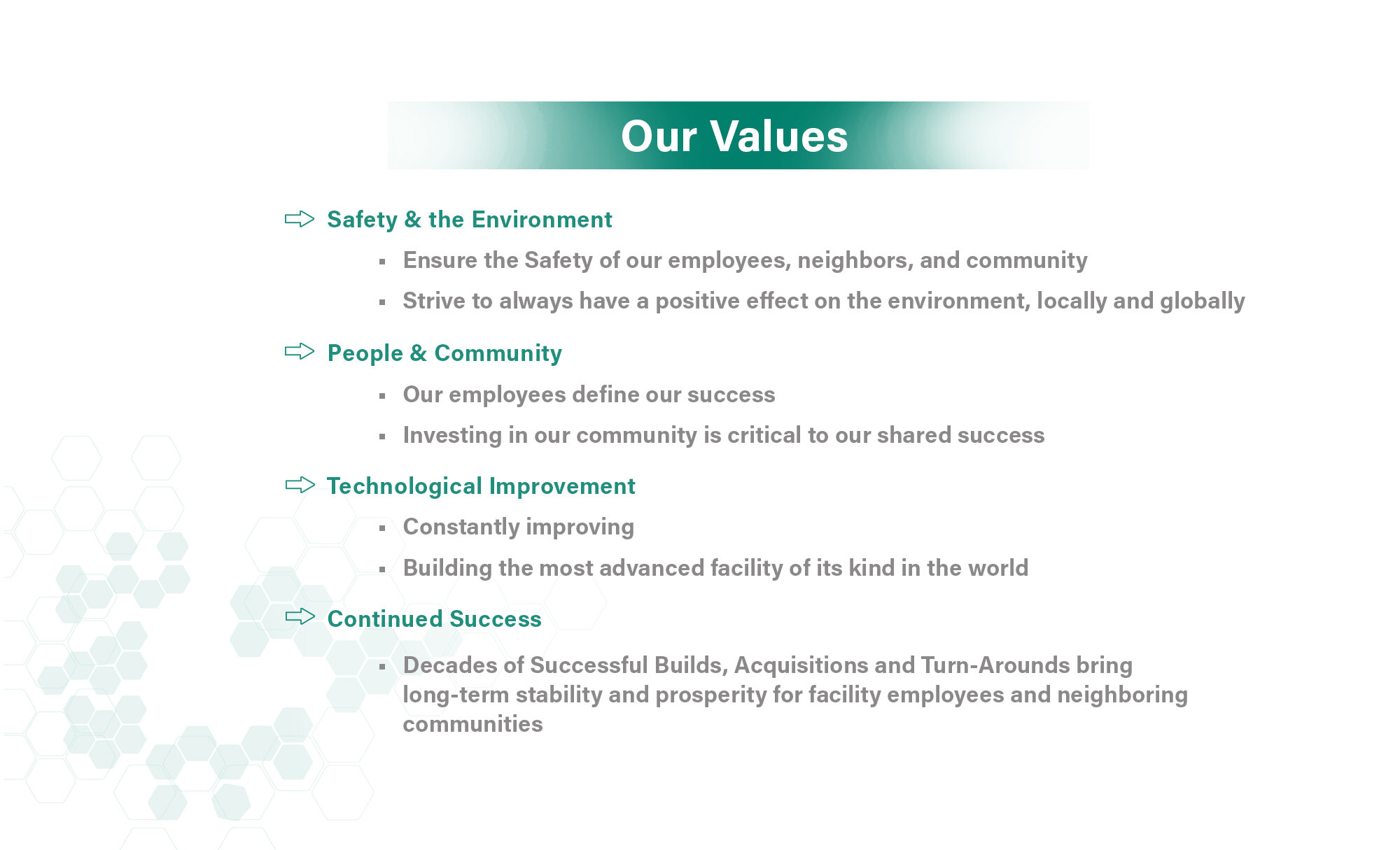
About.

Project Leadership.
Russ Robinson,
Chairman
Thomas Knepper,
EVP Technical Services
Ron Crittendon,
CEO
FAQs.
What does Zinc Resources do?
Zinc Resources’ Victoria County facility recycles dust captured during the steel recycling process and produces two end products – Waelz Zinc Oxide (WZO) and Waelz Iron Product (WIP).
The dust generated by electric arc furnaces during the steel production process can be economically recycled to create what is called “Waelz Zinc Oxide,” or WZO, which can be used as an alternative to virgin zinc ores that come from mines. Use of WZO in the production of zinc products benefits the environment by reducing the development of mining and virgin materials thus saving those resources. Zinc Resources sells WZO to zinc smelters, which produce pure zinc that can be used by the steel industry or other end-users for tires, medicines, sunscreens, vitamins, etc.
The second product, Waelz Iron Product (WIP), is used in cement production and in road construction.
How does Zinc Resources handle air emissions?
Our high efficiency filter system includes a stack for the emission of the filtered air. Other emissions sources at our site include baghouses, vents, the conveyors, emergency generator, and a diesel tank. All which exceed TCEQ permit requirements.
Our permit through the TCEQ authorizes emittance of small amounts of carbon monoxide; hazardous air pollutants; nitrogen oxides; organic compounds; particulate matter including particulate matter with diameters of 10 microns or less lead; and sulfur dioxide. The permit enforces strict limits on those emissions.
How is the air permit evaluated?
TCEQ performs a comprehensive protectiveness review of all permit applications to ensure the permit protects public health and the environment. When Zinc Resources applied for the permit from TCEQ, they documented anticipated maximum emissions levels. We also submitted technically advanced air quality models to quantify potential air impact, including documents to demonstrate that Zinc Resources is using the Best Available Control Technology for our industry. No permits can be issued by the state that cannot demonstrate adherence to all appropriate state and federal standards.
Does the permit cover monitoring of the abatement devices?
The TCEQ permit has specific requirements regarding parametric monitoring of the filtration and abatement devices including opacity requirements as well stack sampling requirements. Additionally, the TCEQ has the authority to require additional monitoring and stack sampling at any time if the agency feels that additional sampling is needed.
What does the draft permit say about downwind impacts?
The TCEQ has determined that the project meets all applicable rules and requirements. Off property impacts are evaluated as part of the permit review. The air modeling, performed by a third party, predicts potential off property impacts. That review has been confirmed by professional TCEQ toxicologists and TCEQ Air Permit reviewers and shows no detrimental impacts to public health or exceedance of state or federal standards. In fact, no permit can be issued that cannot make this demonstration.
How does the Zinc Resources facility compare to other facilities in the United States?
We are aware of several Waelz Kiln facilities in the U.S. All of the other known facilities have multiple kilns and are considerably larger and therefore, not directly comparable.
What are the benefits to the environment for a project like this?
Zinc can be recycled over and over without deteriorating. The life cycle loop of continuous recycling minimizes waste disposal in landfills, reduces energy use and lowers overall emissions within the steel and zinc industries while also reducing the need for mining new ores.
How does the facility operate?
The dust is transported from steel production facilities to the Zinc Resources facility by covered hopper bottom railcars, or by truck. It is discharged inside of an enclosed building and sprayed with water to prepare it for blending and turning it into pellets. Carbon is also added to aid in zinc recovery. The pellets travel from the building to a kiln on a conveyer which is totally enclosed within a steel containment tube. The pellets enter the kiln process through an air-tight enclosure. Heat from the kiln triggers chemical reactions that generate WZO which is entrained in a gas stream. The WZO then settles out of the gas stream while the air is filtered through a very high efficiency filter system. The WZO is then bagged or discharged to a rail car for shipment to customers.
The WIP goes from the kiln through a “cooler” and directly to the “WIP Building,” where it will be tested before being loaded onto trucks.
The unloading building, transfer conveyor, kiln feed enclosure, kiln, cooler and WIP receiving building are all kept under negative pressure to prevent any dust from escaping into the atmosphere.
What fuel does the facility use?
The kiln is fueled by natural gas.
Where does the facility source its water?
Zinc Resources purchases water from the Port of Victoria. The Port supplies water to the project within its allotted water supply.
Does the facility discharge any wastewater?
No, there is no discharge of process water. Zinc Resources has also obtained all appropriate and necessary stormwater permits and authorizations.
What kind of waste is generated at the facility and where does it go?
There is no process waste generated from our recycling process. The only waste generated by our facility is from our business operations i.e., normal office trash, wooden pallets, etc.
Is Zinc Resources prepared for a fire or a hurricane?
The site has a fire suppression system and an emergency generator to allow for a safe, controlled shutdown in the case of a power outage. Recognizing the importance of preparation for industrial facilities along the Gulf Coast, Zinc Resources has prepared detailed response plans for numerous emergency scenarios.
What are the benefits to Victoria County for a project like this?
Zinc Resources has invested over $100 million to build the facility, increasing the value of the land and providing a significant new tax base for the County and other taxing entities over many decades. We will ultimately employee more than 60 people, with a payroll of well over $4 million annually. We intend to recruit and hire from the Crossroads region.
Are there other benefits to the region?
There are significant benefits to the infrastructure of the Port of Victoria and for future tenants of the industrial park by solving long term challenges in rail, electricity, and gas lines.
The Port has used CARES Act funds to create a rail loop within the park. Zinc Resources’ project is the inaugural customer of that loop, generating an immediate return on investment to the Port.
The project has been the catalyst for a new 50-megawatt substation to bring additional power to the industrial park that will leave significant capacity for future development.
Zinc Resources invested in an oversized natural gas supply line, again leaving significant capacity for future development.





